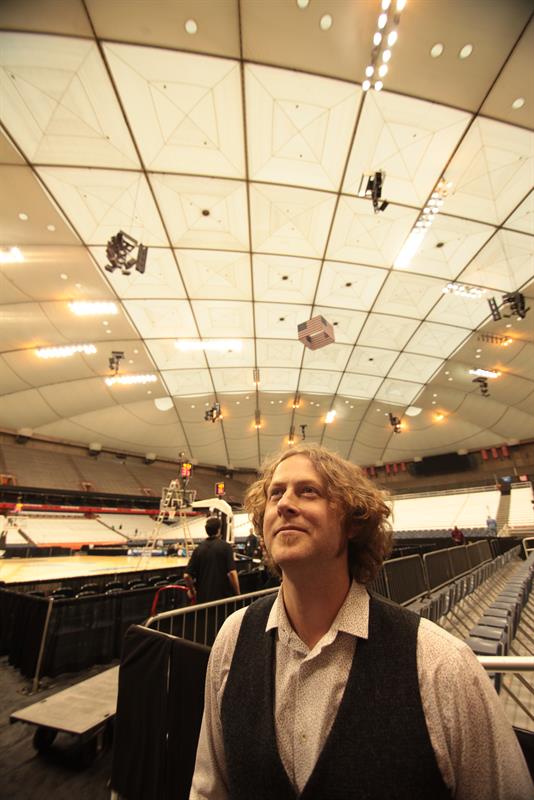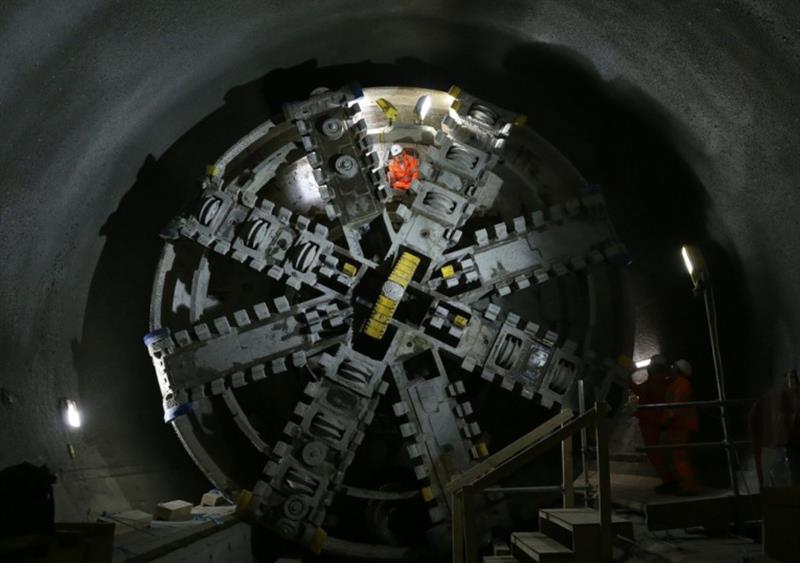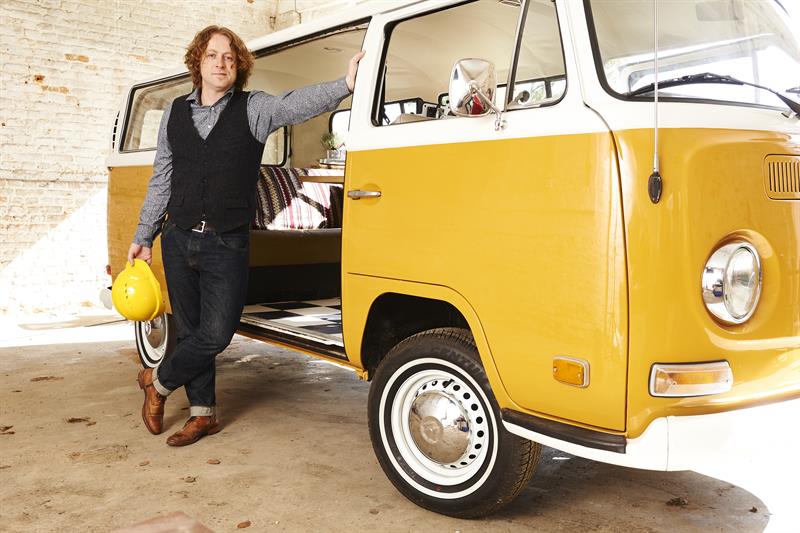Some of you may have noticed that at the beginning of the year there was a distinct lack of content across the pages of Eureka written by myself. No? Well there wasn't. The reason is, well, slightly surreal.
Around this time last year I was called at work and asked if I was interested in auditioning to present an engineering show for Discovery Channel. Thinking nothing would come of it, I gave it a go. Well, one thing led to another and the show was commissioned. So, here I am, writing to you, readers of Eureka, about my TV debut.
The show is called 'Incredible Engineering Blunders: Fixed', and investigates strange engineering phenomena, errors and faux pas that have happened for one reason or another and the extraordinary efforts and solutions applied to put them right.
I loved the concept immediately as it embodies, for me at least, what engineering is about: problem solving. It not aimed as an exposé or finger pointing exercise, but more of a journey investigating what has happened and how it can be fixed.
My time as an engineer started when I was working for Astrium Space back in the early 2000s. There I saw some incredible engineering achievements, and met some wonderful characters. Among them was the late Colin Pillinger, the driving force of the Beagle 2 Mars Lander. To this day I think of that project as a triumph, and despite its superficial failure, it continues in my mind to be a star of ingenuity. So, perhaps, my career has been building up to this point, to look in more detail at more infamous blunders!?
While filming the series I travelled to eight countries to investigate what I regard as mostly civil and construction engineering challenges. Now, without giving too much away, there are a number of reasons why these things have occurred. Some were historical, others a touch on the political, some bad judgement, and others are a compromise of the best bad solution.
I'm a huge fan of VW campervans. I've owned a 1970 VW Baywindow for about 10 years, and despite not ever really working, needing continuous maintenance and never setting a 0-60mph time (top speed – 53mph), I love it. It turns out, so did the producers of the show, which thought this would be the perfect vehicle to accompany me on my journey to investigate various engineering problems. The back of the campervan was also turned in to a lab/workshop with tablets and CAD programmes to explain to viewers what the problem was, and propose a solution. Did it breakdown? Of course. Did the producers have to get out and push? Yes they did. Do I still love campervans, absolutely. Do they? Not one bit. |
I salute all the stories in the series as they're on the whole trying to push the boundaries, do something different, challenge the status quo, or provide solutions to complex, difficult problems. And for me, that's what's exciting about engineering and the show.
I'm not alone in hosting the series. In every episode I'm joined by guest investigators, who go on their own personal mission to undercover what has gone wrong in all corners of the globe. In total we cover 15 countries, from Canada to Australia, Brazil to Malaysia, and of course one or two here in the UK.
So let me give you a flavour of what to expect: I see the remnants of a collapsed ski jump complex; walk the craziest crossroads in the world where a dual carriageway and international airport runway collide; help maintain wind turbines in the North Sea; walk across a stadium roof that is in danger of collapse and held up only by air; drive the worst roads in the US; and inspected the bearing of the world's tallest fully rotating structure. It certainly has been an adventure, to say the least.

Every story that I investigated was different. There wasn't a theme behind the blunders, and rarely was it down to poor engineering. Often it was the only solution, though it may have been far from ideal, such as the elevated roadway through São Paulo. Cars and trucks fill an eight lane highway that is less than a metre from high rise apartments. In other cases I'm still wondering how things went so badly wrong, and got so out of hand. I see a Chilean drawbridge that was built back to front, for example. Work that out!?
It was often impossible to get all the details, speculation was rife with locals and experts alike full of opinion, rather than fact. So, when the producers said it was up to me to use my engineering knowledge to explain the science behind the problem and come up with a solution – I suddenly became rather nervous. Explaining, for example, the science of a landslide in very simplistic terms was not easy. And when I thought I'd got it, I was told that actually the explanation needs to be no more than 45s, not the 20mins I had taken on the previous run.
Coming up with a solution for each problem was also an intimidating task. Often, I would talk to the specialists and expert engineers on the ground, which were actually in the process of fixing the problems. But other times it was a case of brain storming. For example, how do you re-engineer the bearing system of a rotating tower, fix the worse roads in America built below sea level in New Orleans, or stop a building in Leeds generating hurricane force winds that are literally knocking people off their feet?
Part of the joy of filming the series was the access that we were able to get. One of the highlights was being able to get under the streets of London and walk alongside the tunnel boring machine working its way through the city, as part of the Crossrail project. I was able to come face to face with the business end of the tunnel boring machine, get a sense of its scale, and take viewers to places they would never normally get to go.

So, what was the blunder with Crossrail? Well, the actual problem is not in London, but in the USA, where a 4000 tonne behemoth of a tunnel boring machine got stuck under the city. Bertha, the world's largest boring machine, hit 8-inch metal cables that fractured its main bearing about 20m under the streets of Seattle. The machine will not move... so how'd you go about fixing that one? We do indeed find out.
Above all else, filming and seeing these examples of engineering mishaps was a fun experience, and hopefully that comes across in the show. There is a cheeky element to it all, but at its heart, it is an opportunity to share some incredible engineering stories and talk to some brilliant engineers. I do hope you tune in.
| Incredible Engineering Blunders: Fixed will be broadcast in the UK from 20th August on the Discovery Channel and consists of six one hour episodes, and it will be hosted by none other than Eureka's Justin Cunningham. |








 THAT campervan
THAT campervan


